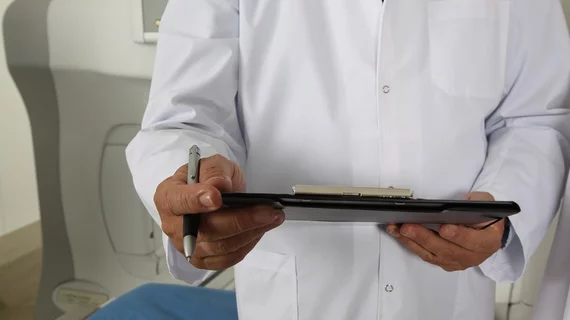Less than 40% of providers adhere to radiologists’ follow-up recommendations for incidental findings
As imaging quality and utilization both continue to increase, the total number of incidental findings follows closely behind. But new research suggests adherence to recommended follow-up exams for these discoveries are highly dependent on care setting and provider type.
That’s what doctors discovered at the University of California, Davis Medical Center after analyzing hundreds of CT radiology reports completed over a six month period. Overall compliance with additional imaging suggestions proved to be near reported averages, with primary care providers and outpatient sites most likely to perform such exams.
Writing Tuesday in JACR, Shan S. Hansra, MD, with the Sacramento, California, institution noted referring physicians are typically responsible for handling rad report recommendations. But when incidental nodules or lesions fall through the cracks, downstream consequences are likely to arise.
“Recommendations for additional imaging [RAIs] are not always followed, which can lead to delays in diagnosis and treatment, as well as poor patient outcomes and legal liability,” Hansra and colleagues wrote. “To improve adherence to RAIs, it is important to understand the factors that affect adherence rates.”
And that’s exactly what the researchers did. They retrospectively looked at 539 reports suggesting additional imaging for incidental CT findings and confirmed if those exams were completed by analyzing patients’ charts.
Radiology recommendations were followed in 39.1% of cases, which ballooned up to 56.8% in patients whose primary care provider was at the same institution. Additionally, chest imaging (3.5%), abdomen and pelvis (3.1%), and neck imaging (3.1%) had the highest RAI rates. Conversely, spine, extremity, and head and face had the lowest at 0.8%, 0.3%, and 0.1%, respectively.
In terms of adherence, location proved to be key. Outpatient exams led all settings, with inpatient and the emergency department rounding out the group.
Ordering provider specialty was also significant, with PCPs abiding in 67% of cases, followed by internal medicine subspecialists (50%) and surgeons (37.7%).
Communication lapses are a primary factor for incomplete follow-ups, the authors wrote. Documenting these instances in the discharge summary is known to boost adherence, but such reports often omit these details. Many patients also only receive test results after they’re released.
To combat these issues, Hansra et al. argued rads must standardize documentation and communication of findings requiring additional analysis.
“Our data suggest that systematic actions such as these are even more crucial for emergency patients and inpatients as well as for examinations ordered by surgeons,” they concluded. “We are currently exploring different techniques of having interpreting radiologists prospectively flag reports that require imaging follow-up at our institution.”
Read the entire study in the Journal of the American College of Radiology.

